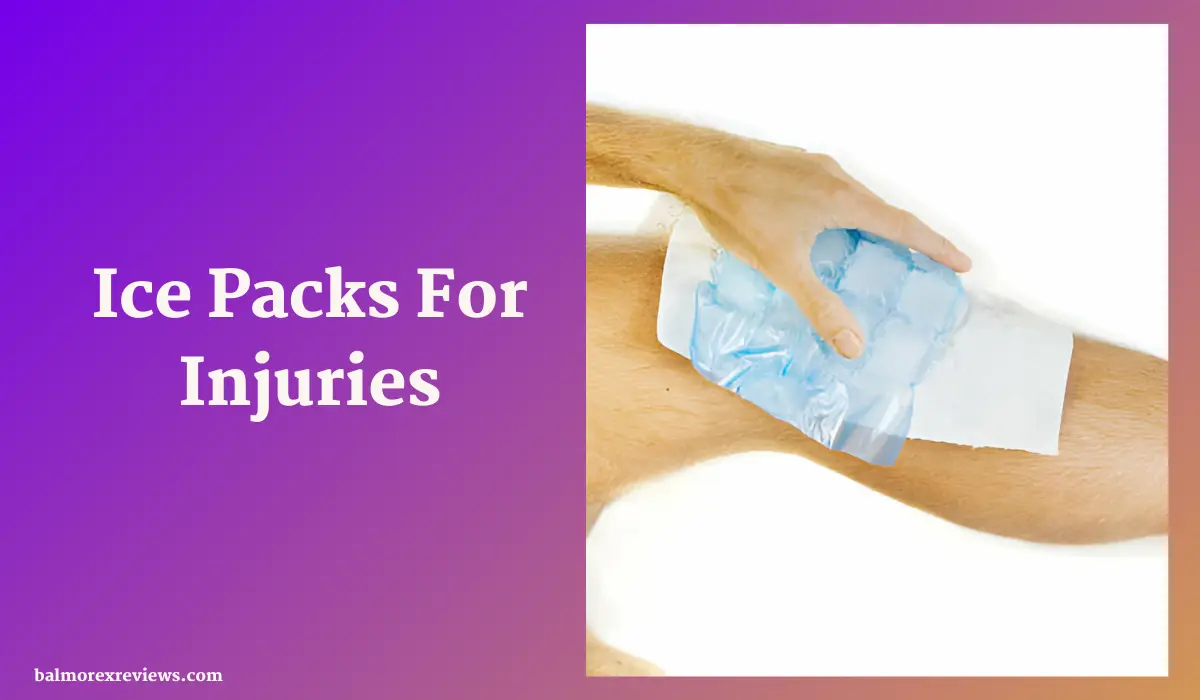How Do Ice Packs For Injuries Work? Unveiling the Benefits of Cryotherapy
Explore the intricacies of cold therapy with a deep dive into the science behind ice packs for injuries. This enlightening piece delves into the physiological mechanisms at play when applying cold to injuries, elucidating how it reduces pain and inflammation. Discover the fascinating interplay between temperature, blood flow, and cellular response, unraveling the mysteries behind this common yet powerful therapeutic technique. Gain insights into how ice packs effectively aid in the healing process, providing relief and promoting recovery for a variety of injuries.

Disclaimer: This article has been generated with the assistance of AI tools. While our research team has fact-checked the content, readers should independently verify information for accuracy and reliability.
When an injury occurs, one of the first lines of defense is often the application of ice packs. This age-old practice has been a staple in the world of sports medicine, physical therapy, and at-home remedies for generations. But what exactly is the science behind using ice packs for injuries, and how does it work to alleviate pain, and swelling, and promote healing? This article will delve into the mechanisms behind cryotherapy, also known as cold therapy, and explore its various applications and benefits.
The Physiological Effects Of Cold Therapy

Cryotherapy, or the application of cold temperatures to the body, initiates a complex series of physiological responses that can aid in the recovery process after an injury. When an ice pack is applied to an injured area, the following effects occur:
🪻Vasoconstriction: The initial application of cold causes the blood vessels in the affected area to constrict, reducing blood flow and subsequently minimizing swelling and inflammation.
🪻Decreased Metabolism: Cold temperatures slow down the metabolic rate of the affected tissues, reducing the demand for oxygen and nutrients, which can help prevent further tissue damage.
🪻Reduced Muscle Spasms: The cooling effect of ice packs can help relax tense or spasming muscles, alleviating pain and discomfort.
🪻Analgesia: Cold temperatures have a numbing effect on the nerve endings, providing temporary relief from pain and discomfort.
These physiological responses work in synergy to create an environment conducive to healing, making ice pack therapy a valuable tool in the management of various injuries.
Types Of Injuries And Conditions Benefiting From Cryotherapy
Cryotherapy, particularly in the form of ice pack application, can be beneficial in treating a wide range of injuries and conditions, including:
🪻Sprains and Strains: One of the most common applications of ice pack therapy is for treating sprains and strains, which often result in swelling, inflammation, and pain. The cooling effect can help reduce these symptoms and promote healing.
🪻Muscle Soreness and Fatigue: After strenuous exercise or physical activity, muscles can become sore and fatigued. Ice pack therapy can help alleviate these symptoms by reducing inflammation and promoting recovery.
🪻Post-Surgical Recovery: Following surgical procedures, ice packs can be applied to the affected area to minimize swelling, reduce pain, and support the healing process.
🪻Arthritis and Joint Pain: Cold therapy can provide temporary relief from the inflammation and discomfort associated with arthritis and other joint-related conditions.
🪻Headaches and Migraines: Applying ice packs to the forehead, temples, or neck can help alleviate the pain and tension associated with headaches and migraines.
While ice pack therapy is widely used and generally considered safe, it is essential to follow proper guidelines and consult with a healthcare professional, especially in cases of severe injury or chronic conditions.
Ice Pack Therapy: Best Practices And Precautions
To maximize the benefits of ice pack therapy and ensure safe application, it’s crucial to follow some best practices and precautions:
🟣Timing: Ice packs should be applied as soon as possible after an injury occurs to help reduce initial swelling and inflammation.
🟣Duration: Experts generally recommend applying ice packs for 15-20 minutes at a time, several times a day, to avoid potential tissue damage from excessive cold exposure.
🟣Barrier Protection: To prevent skin irritation or frostbite, it’s essential to place a thin barrier, such as a towel or cloth, between the ice pack and the skin.
🟣Monitoring: It’s important to monitor the area being treated for signs of discoloration, increased pain, or numbness, as these could indicate potential tissue damage or frostbite.
🟣Hydration: Applying ice packs can cause fluid loss through increased urination, so it’s essential to stay well-hydrated during the treatment process.
🟣Contraindications: Individuals with certain medical conditions, such as Raynaud’s phenomenon, diabetes, or impaired sensation, should consult with a healthcare professional before using ice pack therapy.
It’s important to note that while ice pack therapy can be highly effective in managing acute injuries and reducing inflammation, it may not be suitable for chronic conditions or injuries that require increased blood flow and healing. In such cases, alternative therapies, such as heat application or physical therapy, may be more appropriate.
The Future Of Cryotherapy
While ice pack therapy has been a staple in the world of sports medicine and injury management for decades, the field of cryotherapy continues to evolve. Recent advancements have led to the development of whole-body cryotherapy chambers, which expose the entire body to extremely low temperatures (typically around -100°C to -200°C) for a short period.
Whole-body cryotherapy is gaining popularity among athletes, as well as individuals seeking relief from chronic pain, inflammation, and other conditions. Proponents of this therapy claim that it can help reduce muscle soreness, improve recovery time, and potentially provide benefits for conditions like arthritis, multiple sclerosis, and fibromyalgia.
However, it’s important to note that the scientific evidence supporting the efficacy of whole-body cryotherapy is still limited, and more research is needed to fully understand its potential benefits and risks. Additionally, the use of whole-body cryotherapy chambers may not be suitable for everyone, and it’s crucial to consult with a healthcare professional before undergoing this type of treatment.
Final Results
Ice pack therapy, a form of cryotherapy, has been a trusted and effective method for managing injuries, reducing inflammation, and promoting healing for generations. By understanding the physiological mechanisms behind the application of cold temperatures, individuals can better appreciate the benefits of this simple yet powerful treatment modality.
While ice pack therapy is generally considered safe and effective for acute injuries and conditions, it’s essential to follow proper guidelines and consult with healthcare professionals, especially in cases of severe or chronic conditions. As the field of cryotherapy continues to evolve, with advancements like whole-body cryotherapy chambers, it’s crucial to approach new therapies with caution and rely on scientific evidence to ensure safety and efficacy.
Ultimately, the power of ice pack therapy lies in its ability to harness the body’s natural healing processes and provide relief from pain and discomfort. By embracing this time-tested treatment method and staying informed about the latest developments in the field of cryotherapy, individuals can enhance their overall well-being and recovery from injuries and various conditions.
References
Natalie Smith
Natalie Smith is a highly respected Osteopath with over 15 years of experience in treating a wide range of musculoskeletal conditions. She graduated from the British School of Osteopathy with a Master’s degree in Osteopathic Medicine and is a registered member of the General Osteopathic Council. Natalie’s expertise spans the diagnosis and treatment of issues affecting the muscles, bones, joints, and connective tissues. She utilizes a holistic, patient-centered approach, combining manual techniques such as spinal manipulation, soft tissue massage, and joint mobilization to alleviate pain and restore optimal function. Passionate about educating her patients, Natalie frequently speaks at local health workshops and has authored articles on osteopathic care for several respected medical journals. Her commitment to ongoing professional development ensures she remains at the forefront of the latest advancements in the field of osteopathy.
